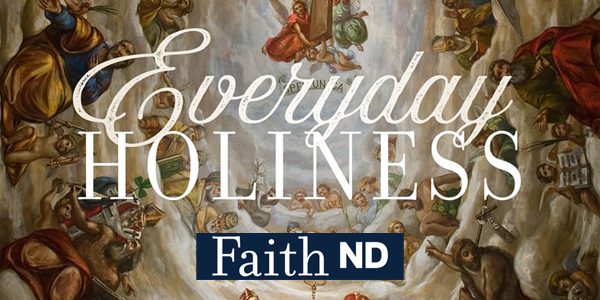African American Classical Architecture: Then and Now
Tuesday, February 27, 2024 12:00 pm EST
Phillip Smith ’19 M.Arch. explores the historical influence of classical and traditional architecture beginning with Egyptian influence on ancient Greek and Roman architecture, and later sharing the impact African American architects, designers, and builders have had on our built environment. This event was recorded on February 14, 2024.
Speaker:
Phillip Smith ’19 M.Arch, assistant professor of Architectural Design at the American College of the Building Arts, Architectural Designer and Consultant
In a timely and compelling installment of Restoring Reason, Beauty, and Faith in Architecture, Phillip Smith, a revered architect, explores the historical influence of classical and traditional architecture beginning with Egyptian influence on ancient Greek and Roman architecture, and later shares the impact African American architects, designers, and builders have had on our built environment. The stage was set for a profound exploration of the intersection between cultural heritage and architectural innovation, unpacking layers of history and influence that continue to shape modern landscapes.
The conversation opened with a moving account of an explosion at a church that inflicted significant damage and led to several casualties, illustrating the vulnerability of sacred architectural spaces. This set the context for a deeper discussion on the enduring impacts of African American architects across centuries, beginning with pioneering figures like William Sidney Pittman and Julian Abel, whose designs and fortitude in the face of discrimination laid a monumental foundation for the generations that followed.
The conversation dove into the intricate web of African American culture’s influence on American architecture, stressing the necessity for racial and social justice to be ingrained in both societal attitudes and the very design of our shared spaces. Further, Smith and Professor Mellor engaged in a captivating discourse on the research and design efforts behind the International African American Museum in Charleston, revealing challenges they had faced such as HVAC issues and the meticulous plans outlined for writing a monograph.
One of the highlights of the discussion was the meticulous comparison drawn between slave cabins in Georgia to vernacular buildings in West Africa, bringing to light the cultural and architectural continuity that persisted despite the absence of direct contact, and researching the scroll patterns shared between Philip Simmons’ ironwork and those of West African traditions.
As the narrative of the episode unfolded, it also touched upon the histories of important figures such as Eliza Lucas and John Williams, centering on the latter’s role as an architectural trailblazer who, despite being enslaved, mastered trades and passed on his knowledge, ultimately impacting Charleston’s Georgian building heritage. With captivating detail, the story of the Pinckney Mansion emerged, a structure emblematic of the English Palladian villa style and a testament to the deep imprint of skilled enslaved labor on American classical architecture.
The legacy of tabby buildings at Penn Center, a material with African origins, was also discussed, showcasing how this building technique became instrumental in the architecture of South Carolina, particularly at the Church of the Holy Cross in Stateburg. Listeners learned of the meticulous process of making tabby and the significance it bears as both a material and a cultural symbol in the architectural dialogue.
Smith and Mellor delved into the Hampton Tuskegee model of education, highlighting how it not only involved students in construction but demonstrated the potential of African American individuals in the building trades. The episode paid homage to Robert Robinson Taylor and Wallace Augustus Rayfield, who both made indelible marks on the field of architecture, including Rayfield’s work on the 16th Street Baptist Church – a site tragically bombed by white supremacists.
The vibrant discussion then transitioned to Philip Smith’s introduction by Professor Mellor, focusing on Smith’s groundbreaking work with an alternative design proposal for an international African American museum. Smith’s approach sought to recontextualize classical architecture within African American communities, challenging prevailing misconceptions, and highlighting the creative input of enslaved laborers.
Smith, as an educator at the American College of the Building Arts, brought unique insights into architectural history, spotlighting figures such as enslaved craftsman John Williams and the influence of slave labor on Charleston’s storied designs, from St. Michael’s Church to the Penn Center, and the tradition of craftsmanship in African American churches.
Lastly, the episode delved into the cross-cultural connections that infused craftsmanship in Charleston, presented through Smith’s reflections on the trade secrets passed down in Indian and African American communities, and the importance of preserving these traditional skills. Listeners were drawn into the narrative of homes built by enslaved individuals from Barbados, the shared experiences of tradespeople of diverse backgrounds, and the indelible architectural styles borne from this intricate tapestry of influences.
As the episode drew to a close, the lecture did not just recount historical feats; it also served as a clarion call to recognize and honor the manifold contributions of African American architects and laborers in shaping the architectural narrative of America.
- Architectural Diversity: Recognize the often overlooked contributions of African American architects and craftsmen like Julian Abel and John Williams, prompting a deeper questioning of the true authors behind our built environment and the multiplicity of voices shaping cultural narratives.
- Cultural Resilience: Discover the enduring cultural threads between African American and West African design patterns, and the resilience of cultural identity through creative expression, inspiring us to seek out similar continuities in our own heritage.
- Value of Tradition: Uncover the significance of preserving craft traditions and ancestral legacies, encouraging us to cherish and uphold our own familial or cultural practices.
- Embracing Diversity: Learn from historical examples of collaboration across differences, such as enslaved Africans and European immigrants working together in Charleston, as a model for embracing diversity and cooperation in our workplaces and communities.
- Sustainable Inspiration: Explore sustainable construction practices with historical roots, like the use of tabby, to inspire modern eco-friendly approaches and remind us that looking to the past can inform our future endeavors.
- Architectural History and Slavery’s Role: “More importantly, virtually every structure in the city constructed before 1865 was built, detailed, and to some extent, designed entirely by the enslaved people of Charleston.”
— Phillip Smith [00:05:03→00:05:15]
- The Influence of James Gibbs’ Architecture Book: “Undertaken at the instance of several persons of quality, who were of the opinion that such a work would be useful to gentlemen concerned in building, especially in the remote parts of the country, where little or no assistance for designs can be procured. Those individuals may be furnished here with drafts of useful and convenient buildings and proper ornaments, which may be executed by a workman who understands lines.”
— Phillip Smith [00:17:18→00:17:39]
- Tuskegee Institute’s Architectural Legacy: “The project epitomized Washington’s philosophy of instilling in Tuskegee students, the descendants of formerly enslaved Africans, the value and dignity of physical labor, and providing an example to the world of the capabilities of African Americans in the building trades. It underscored the larger potential of the manual training curricula being developed at Tuskegee.”
— Phillip Smith [00:36:43→00:37:04]
- Recognizing Unacknowledged African American Contributions to Architecture: “The practice of hiring out enslaved people to build the great 18th to mid-19th-century structures reinforces the notion that classical and traditional architecture is not a racist or prejudiced discipline of design. Yes, the institution of slavery has left a permanent stain upon American society, but it was through this unfortunate practice that the traditions of continental Africa survived. Just as many aspects of American culture, such as music, food, and visual arts, have African American influences, so does architecture.”
— Phillip Smith [00:45:02→00:45:36]
- Colonial Charleston’s Diverse Workforce:”There were Jewish people, there were Catholics, there were Germans, there were French Huguenots, there were Irish; there were a lot of people who were working there. The Carolina colony had, relatively, a thriving German population, so there were some specialized craftsmen coming from Europe who worked side by side with enslaved individuals. At that time and age, they pretty much shared the same social status as enslaved persons.”
— Phillip Smith [00:59:29→00:59:56]
- Caribbean Influence on Architecture:”They’re building these structures out of coral limestone, and then they realize coral limestone is ideal, but for the porches, they orient them east-west on the southern side to mitigate the heat. In Barbados and Charleston, the prevailing winds move east-west, so wooden porches were common in Barbados. They already knew how to connect wood to coral limestone. When they arrived, they had wood but still had more to explore.”
— Phillip Smith [01:00:45→01:01:29]
Related Content
Shannon Sharpe/Katt Williams, The Black Impact on the NFL Super Bowl & Taraji P Henson
In the first episode for Season 8, Isaiah and Tykiera talk about the Shannon Sharpe/Katt Williams Interview that took the internet by storm at the beginning of the year as well as...
watch videoEveryday Holiness: John Cavadini
Dr. John Cavadini, director of the McGrath Institute for Church Life and professor in the theology department at the University of Notre Dame, shares some of the hidden aspects...
View EventClimate Change and The Limits of Narrative
Join the Kellogg Institute for the introductory session of a workshop refining Kellogg Faculty Fellow Roy Scranton’s draft book project “Ethical Pessimism: Climate Change and...
View Event


